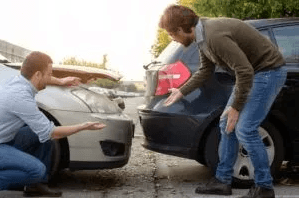More often than not, after a motor vehicle accident, an examination of the vehicles involved along with police reports, damage photographs, and other expert testimony from accident reconstructionists can provide valuable evidence of fault.
Different Accidents Reveal Different Details
Every case is unique and vehicle damage is one factor in a typical accident claim. Other evidence which needs to be evaluated include testimony from the drivers or pedestrians involved, witness interviews, road conditions and weather reporting, vehicle data, and many other factors. Accident reconstruction specialists can weigh all of the available evidence and render expert opinions as to who was at fault for the accident. However, not all situations are the same. Let’s look at the following accidents to understand how fault can be determined:
The Driver in the Rear is Usually Responsible for Rear-End Collisions
If you are rear-ended, there is an assumption in New York law that the vehicle that struck you in the rear was at fault for the collision. Even if you had to stop quickly for a car braking in front of you, all motorists are required to maintain a certain following distance to the vehicles in front of them.
Damage to your rear bumper and marks of paint that match the color of the vehicle could prove fault in your case.
Side-Impact Collisions are not Always Clear-Cut
If you are hit on the side of your vehicle, it is not always clear who was at fault. In this situation, a careful examination of the traffic control devices such as traffic lights or stop signs present at the scene, video footage, witness and driver testimony and other factors must be performed.
There are many different circumstances and actions that could result in a collision causing damage to the side of your vehicle. For instance:
- If you made an improper left turn at an intersection, this could have caused another vehicle to hit you. In this situation, you would be at fault since you neglected to follow the rules of the road.
- If another driver did not heed a red light at an intersection, they could have hit your side door while you had the right of way. In this situation, they would be negligent because they did not obey the traffic signal.
Every detail in every situation must be considered to determine what happened and who is at fault.
The Points of Impact Following a Head-On Collision are Important
Similarly, when it comes to determining fault, having the front of your vehicle damaged in an accident is not as clear-cut as being rear-ended – unless the damage is centralized, meaning that you likely rear-ended another driver.
However, if the damage is not centralized or the damage from the other vehicle indicates that a collision occurred head-on – that is, both vehicles are damaged in the front – then more information like witness statements and traffic camera footage might be needed to determine what happened.
For a free legal consultation, call (212) 732-2929
What Constitutes Fault in a New York Motor Vehicle Accident?
Occasionally, accidents are caused by natural forces or things completely outside of anyone’s control. However, per the National Highway Traffic Safety Administration (NHTSA), motor vehicle accidents are usually caused by the negligence or recklessness of one or more drivers. But what constitutes negligence?
Negligence is a legal term that is used to describe an action or lack of action that departs from the behavior that a reasonably prudent person would take in those same circumstances.
Some examples of negligence include:
- Speeding
- Texting while driving
- Failing to use a turn signal
- Failing to obey traffic laws
- Road rage
- Driving while intoxicated by drugs or alcohol
- Failing to yield to the right-of-way
Sometimes, if there is mutual or comparative negligence of both drivers, it can be difficult to discern how much each driver contributed to an accident. Even when there is only one driver at fault, damage caused by an impact from certain angles may leave unclear evidence as to which driver is responsible for the damage.
Can You Still Pursue Losses If You Were Negligent?
New York law allows drivers to sue for compensation even if they are partially at fault in an accident. However, the amount you recover will be reduced in proportion to the amount of your own fault. For example, if you were held to be 50% at fault for an accident, you would be permitted to recover 50% of your damages.
Our team has been helping people since 1988. In that time, we have recovered $450 million for our clients. One of the reasons that we are so successful is because we have a network of accident reconstruction specialists who help us determine fault for collisions.
These individuals look at the damage on a car and determine who is at fault by:
- Using computer imaging software
- Recreating accidents with simulations and models
- Employing physics and mathematical formulas
- Evaluating the vehicles’ black box data
- Evaluating witness and driver testimony
- Examining video footage
Click to contact our personal injury lawyers today
Reach Out to Our Team of Lawyers to Learn More.
If you have been physically injured in a motor vehicle accident or sustained damages to your property due to another person’s negligence, call our firm today to review your case. Begin a free consultation by dialing (212) 732-2929. If we agree to accept your case, you will not be required to pay us any money upfront. We only earn a legal fee when you recover compensation.
Whether you’re dealing with injuries from a car accident, construction accidents, or a wrongful death case, our attorneys are here to provide compassionate support.
Call or text (212) 732-2929 or complete a Free Case Evaluation form

